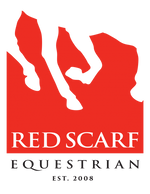BY DOUGLAS ALLEN
When school has settled in for the academic year, the hum of the heater steady in the background of classroom chatter, when at times you can see your breath hang in the air, and when you have likely observed that first frost on the pumpkin, you get the feeling that it’s almost time for the Royal Agricultural Winter Fair. The autumn harvest is largely accomplished, and there is time now to think about bringing the best of it to showcase in Toronto.
If you grew up anywhere in the Greater Toronto Area you likely have your own memories of your visits to the old Coliseum. For many it was an annual agricultural pilgrimage of sorts, the big yellow school bus pulling up outside of the old beige building. You would walk along with your classmates and see the cows and ducks and chickens and, of course, horses. You would look each cow in the eye and try to perceive what it meant to be a cow in this building, in this city, in the world. The blue-eyed cow caught your imagination, the one that seemed to know something the brown-eyed ones simply did not, but wasn’t telling you either. You remembered the calm blue gaze, that seemed to look right through you, long after you left the building and were safely back inside your classroom, now trying to write a Report on what it all meant.

It encapsulates some of the most important ideals and values that this country has been built upon...
We recognize the importance of introducing children living in the city to the reality and difference of the countryside. It is as if we long for the Royal to give them a complete explanation. Because it is not just a matter of seeing a cow milked that brings children and adults alike to the Royal. The Fair speaks to our heritage as Canadians. It represents in our collective imagination what the countryside is. It encapsulates some of the most important ideals and values that this country has been built upon: hard work, doing your very best, patience, the endurance of setbacks, the acceptance and determination needed to deal with the Canadian climate, the keeping of promises, the commitment to seeing a farm, a crop, a herd, a horse, a village, a child, achieve all that can be achieved, a commitment to tomorrow. For we need remember that the foundation of our way of life, despite all the technology in the world, remains agriculturally based. You can’t eat technology.
The elegant and every day are side by side at the Royal Winter Fair, the top hat lays beside the blue dungarees. It is a reflection of what makes Canada home.
Still, the Royal was also founded in good measure with the equestrian in mind as well. The horse, whether as work animal or show piece, retains its important presence in the Canadian countryside, and that presence is reflected in the events inside. It is among the dreams of Canadian children, perhaps a little more for girls than for boys... to ride a show horse triumphantly in the arena at this agricultural Winter Fair, and then afterwards to stand in the winner’s circle, a gold ribbon in hand. The Royal includes the glamour and elegance of the equestrian. It provides a venue that allows for the equestrian elements, the show horse, the top hat and champagne, to have their urban moment. The elegant and every day are side by side at the Royal Winter Fair, the top hat lays beside the blue dungarees. It is a reflection of what makes Canada home.
The Royal Winter Fair is, of course, not just a Toronto area event. Exhibitors and visitors come from across this country to support and enjoy the events. Indeed, they come from beyond the Canadian landscape.
The Royal has taken place annually in November since 1922 with the exception of the years of World War II (https://en.wikipedia.org/w/index.php?title=Royal_Agricultural_Winter_Fair&oldid=860061273). It begins tomorrow in Toronto and continues through till November 11th. Perhaps consider taking a child with you to give them a glimpse of things from the country side of life.



WHO IS DOUGLAS ALLEN?

Douglas Allen is a PhD Candidate in History at the University of Toronto. His historical studies are of late medieval and Renaissance Europe. He is interested in using the lens of identity to explore and understand history, human motivation and action. Douglas is also a writer who is currently writing a novel set in the City of Winnipeg in the 1980’s, which explores the nature of indigenous and non-indigenous relations.


Leave a comment